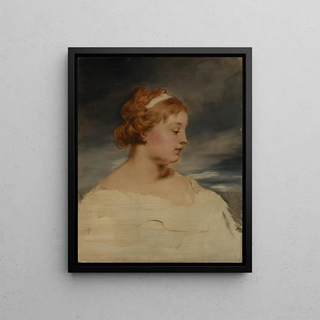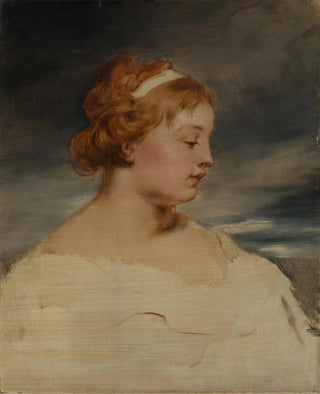Art print | Portrait of a girl - Hans Canon


View from behind

Frame (optional)
In the vast panorama of art history, some works stand out for their ability to capture the essence of the human soul. "Portrait of a Girl" by Hans Canon is one of those creations that, through its delicacy and expressiveness, invites deep contemplation. This painting, imbued with visual poetry, transports us to a universe where every detail seems to tell a story. The beauty of the subject, the finesse of the features, and the mastery of colors make this piece a true masterpiece, revealing the artist's sensitivity and unparalleled talent for immortalizing youth and innocence.
Style and uniqueness of the work
Hans Canon's style is characterized by a realistic approach, where each element is carefully observed and rendered with remarkable precision. In "Portrait of a Girl," the artist uses a palette of soft colors that enhance the brightness of the young girl's face. Delicate shades of pink and beige blend harmoniously, creating an atmosphere of serenity and gentleness. The light, subtly orchestrated, plays a crucial role in the composition, highlighting the contours of the face and the sparkle in her eyes. This portrait is not limited to a simple representation; it is a true psychological study, where the expression on the face seems to reflect an inner thought, a dream, or a melancholy. The way Canon captures the fleeting moment of youth and wonder makes this work a timeless piece that still resonates today.
The artist and his influence
Hans Canon, born in 1820 in Vienna, was an Austrian painter whose work is part of the realism movement. Influenced by the great masters of painting, he developed a style that combines meticulous observation and artistic sensitivity. Canon distinguished himself by his ability to create portraits that go beyond mere physical representation, seeking to grasp the soul of his subjects. His works, often imbued with gentle melancholy, testify to an era where art was meant to reflect humanity in all its complexity. Throughout his career, Canon managed to establish himself as a preferred portraitist, attracting the attention of the elite of his

Matte finish

View from behind

Frame (optional)
In the vast panorama of art history, some works stand out for their ability to capture the essence of the human soul. "Portrait of a Girl" by Hans Canon is one of those creations that, through its delicacy and expressiveness, invites deep contemplation. This painting, imbued with visual poetry, transports us to a universe where every detail seems to tell a story. The beauty of the subject, the finesse of the features, and the mastery of colors make this piece a true masterpiece, revealing the artist's sensitivity and unparalleled talent for immortalizing youth and innocence.
Style and uniqueness of the work
Hans Canon's style is characterized by a realistic approach, where each element is carefully observed and rendered with remarkable precision. In "Portrait of a Girl," the artist uses a palette of soft colors that enhance the brightness of the young girl's face. Delicate shades of pink and beige blend harmoniously, creating an atmosphere of serenity and gentleness. The light, subtly orchestrated, plays a crucial role in the composition, highlighting the contours of the face and the sparkle in her eyes. This portrait is not limited to a simple representation; it is a true psychological study, where the expression on the face seems to reflect an inner thought, a dream, or a melancholy. The way Canon captures the fleeting moment of youth and wonder makes this work a timeless piece that still resonates today.
The artist and his influence
Hans Canon, born in 1820 in Vienna, was an Austrian painter whose work is part of the realism movement. Influenced by the great masters of painting, he developed a style that combines meticulous observation and artistic sensitivity. Canon distinguished himself by his ability to create portraits that go beyond mere physical representation, seeking to grasp the soul of his subjects. His works, often imbued with gentle melancholy, testify to an era where art was meant to reflect humanity in all its complexity. Throughout his career, Canon managed to establish himself as a preferred portraitist, attracting the attention of the elite of his






